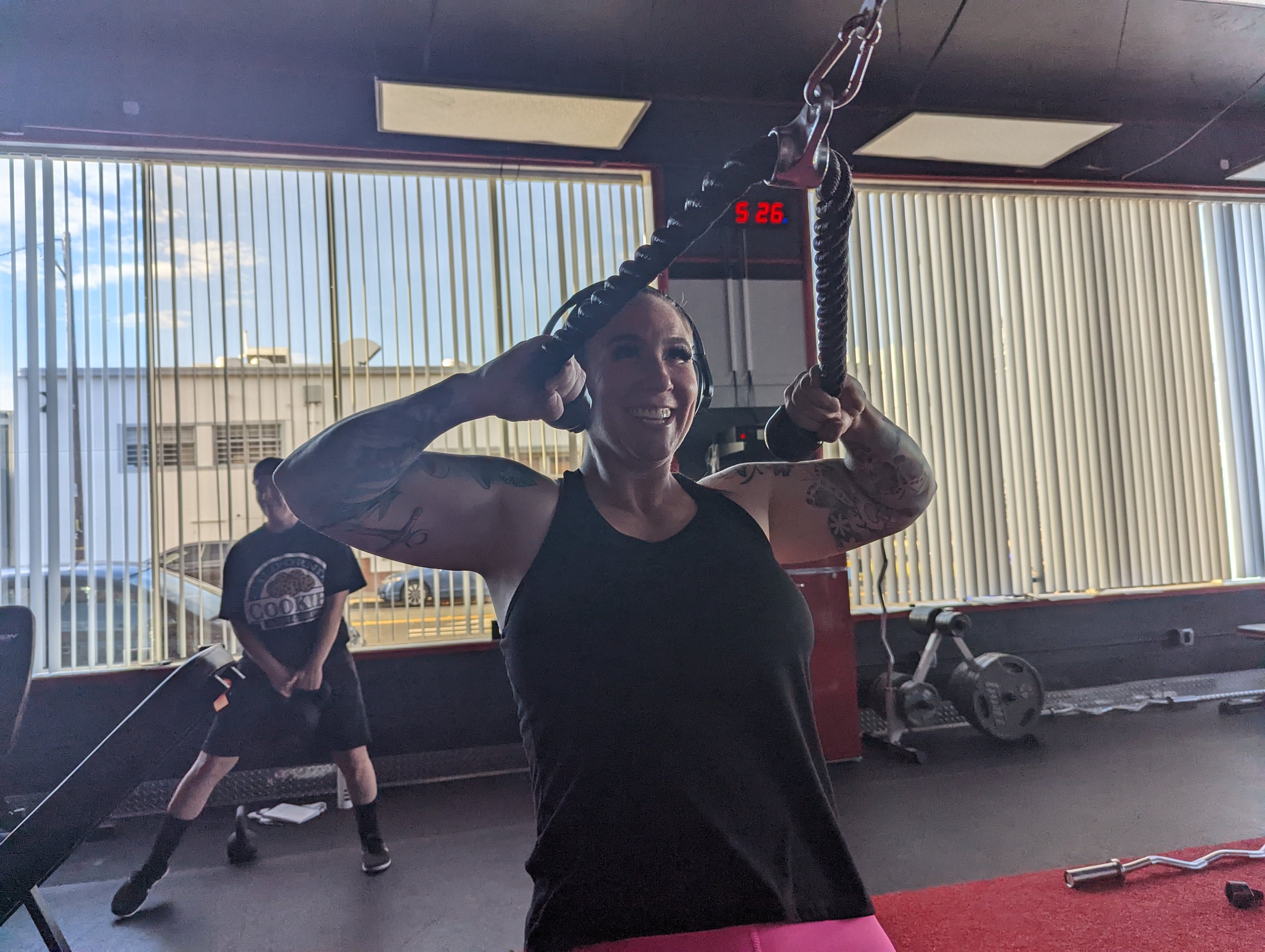
BLOGS
5 components of physical fitness
Physical fitness is the ability to function effectively throughout your workday, perform your usual other activities and still have enough energy left over to handle any extra stresses or emergencies which may arise.
The components of physical fitness are:
Cardiorespiratory (CR) endurance - the efficiency with which the body delivers oxygen and nutrients needed for muscular activity and transports waste products from the cells.
Muscular strength - the greatest amount of force a muscle or muscle group can exert in a single effort.
Muscular endurance - the ability of a muscle or muscle group to perform repeated movements with a sub-maximal force for extended periods of times.
Flexibility - the ability to move the joints or any group of joints through an entire, normal range of motion.
Body composition - the percentage of body fat a person has in comparison to his or her total body mass.
Improving the first three components of fitness listed above will have a positive impact on body composition and will result in less fat. Excessive body fat detracts from the other fitness components, reduces performance, detracts from appearance, and negatively affects your health.
Factors such as speed, agility, muscle power, eye-hand coordination, and eye-foot coordination are classified as components of "motor" fitness. These factors most affect your athletic ability. Appropriate training can improve these factors within the limits of your potential. A sensible weight loss and fitness program seeks to improve or maintain all the components of physical and motor fitness through sound, progressive, mission specific physical training.
Principals of exercise
Adherence to certain basic exercise principles is important for developing an effective program. The same principles of exercise apply to everyone at all levels of physical training, from the Olympic-caliber athlete to the weekend jogger.
These basic principles of exercise must be followed.
Regularity
To achieve a training effect, you must exercise often. You should exercise each of the first four fitness components at least three times a week. Infrequent exercise can do more harm than good. Regularity is also important in resting, sleeping, and following a sensible diet.
Progression
The intensity (how hard) and/or duration (how long) of exercise must gradually increase to improve the level of fitness.
Balance
To be effective, a program should include activities that address all the fitness components, since overemphasizing any one of them may hurt the others.
Variety
Providing a variety of activities reduces boredom and increases motivation and progress.
Specificity
Training must be geared toward specific goals. For example, people become better runners if their training emphasizes running. Although swimming is great exercise, it does not improve a 2-mile-run time as much as a running program does.
Recovery
A hard day of training for a given component of fitness should be followed by an easier training day or rest day for that component and/or muscle group(s) to help permit recovery. Another way to allow recovery is to alternate the muscle groups exercised every other day, especially when training for strength and/or muscle endurance.
Overload
The work load of each exercise session must exceed the normal demands placed on the body in order to bring about a training effect.
Do you want a sexy, perky butt?
Did you know that whether you are a guy or a girl, one of the anatomies that are constantly being scrutinized is your behind? Many do say that a bubbly bumper is one of the most attractive parts of the human body.
Now take a minute and take a look at your own buns right now. Is it tight, buoyant and athletic or is it drooping and irregular? Worse, is it without any tone and just hangs there like deli meat just cut from the butcher shop? If you really want tight and provocative cakes that will make heads turn when you're in a pair of tight jeans or in a cute bikini then read on.
Your Donk consists of three muscles, the gluteus maximus, medius and minimus. The gluteus medius and minimus are the muscles on the sides of the hip that are used for the internal rotation of your thigh. The gluteus maximus is the largest of the three muscles and is used for hip extension, outward rotation, leg adduction and abduction. These muscles are collectively called the "Glutes".
Besides looking good and inviting, a strong Money Maker helps us in our daily activities as well. Climbing stairs or squatting down to pick something up for instance. These muscles are also essential for performance. A strong tush will also help give you power in sports, like cycling and especially in sports that require quick acceleration and jumping such as football, volleyball, soccer, and basketball.
If your Cheeks are hanging and lumpy then there is a layer of fat covering these muscles. Simple fix! Lose the fat with a combination of cardio, resistance training and the proper amount of calories on a daily basis. This is where a well versed trainer comes in handy and I can think of one or two places to find one (**hint hint**).
To have that extravagant looking Booty, weight resistant exercises is an absolute MUST to incorporate into your workout routines. For some people running, a stair-master or even an elliptical will have positive effects towards helping shape their Biscuits, but to have that jaunty, libidinous Caboose you will have to incorporate squats, dead lifts and lunges; just to name a few, which are fantastic Derriere shapers.
So in a nutshell, you need to lose the surrounding fat to build a well muscled Rump Shaker. In order to own a pair of sensuous tail feathers that make heads turn and eyes glued to your bottom posterity as you pass on by then you also need to be mindful of what else goes into your body. That isn't difficult. All you need is the knowledge and expertise of a professional, some commitment and determination on your part and you are already on your way there.
How important are calories to an active lifestyle?
One of the first things individuals who are looking to lose weight do when starting a new active lifestyle is to severely restrict their calorie intake in order to lose excess weight quickly. Even seasoned athletes may restrict their diets even further in order to slim down for an up-and-coming event. Whereas consuming fewer calories will definitely help you to lose weight, it is detrimental to those who are active. A few of the effects of a restrictive diet are:
Having sufficient amounts of energy is pertinent to anyone who leads an active lifestyle. Because calories and fat are your body’s main sources of energy, restrictive diets will cause fatigue because the body has nothing to draw energy from.
Testosterone is a sex hormone that can be severely affected by a restrictive diet. This cannot only adversely affect energy levels in men, but it can also drastically reduce their sex drive.
Leptin is a hormone that regulates energy production. It is also known as the ‘hunger’ hormone which signals you to eat. When levels of this hormone are low, your brain triggers your body to start eating in order to boost its energy levels. By severely restricting your calorie intake, you are setting yourself up to feel constant hunger, which can lead to binge eating later.
A diet that is severely deficient in calories places your body under tremendous stress, as it thinks it is starving. To compensate for this lack, the thyroid severely slows down the metabolism in order to preserve energy, which can actually lead to weight gain. You may also experience depression, brain fog, hair loss and constipation.
Muscle requires a high amount of calories in order to maintain itself. When you adhere to an extremely calorie restrictive diet, your body often times starts consuming its own muscle tissue in order to sustain itself. Fat provides your body with the energy it needs, but if it cannot be found, muscle tissue is the next best thing. This results in decreased strength and muscle atrophy. Even though you may perform strength training exercises, you will not see the results you want, simply because there are not enough nutrients to support the development of healthy muscle.
If you are trying to lose weight, a good rule of thumb is to consume as many calories as you can, and still lose 1 to 2 pounds per week. If you are an active person who is not seeking to lose weight, you should consume as many calories as possible until you start gaining weight. Then, reduce your intake to a point where your weight is stabilized.
There really is no magic number of calories one person should consume. Everyone’s body type and metabolisms are different, therefore everyone needs a different daily calorie set in order to achieve and maintain their ideal body.
Eat plenty of lean protein and fresh fruits and vegetables per day, and your body will receive the proper nutrients it needs. Eating healthy foods instead of processed ones ensures you are consuming the correct types of calories to keep your body functioning at optimal levels.
